|
In this entry I talk about how I pimped-up my primary race bike, the 2015 edition of Niner Bikes Jet 9 RDO (race design optimized). The pimping was accomplished with assistance from Brave New Wheel and Push Industries. And the design changes were inspired by features of Niner Bikes latest cross-country racer, the Rocket 9 RDO. After discussing those improvements, I delve into nutritional mistakes that I was making at the onset of racing in the first half of May. I conclude the article with details about the FoCo 102, my successes and near derailment, and a few words about 12-hrs of Mesa Verde. I'll pick-up with the details including the conclusion in my next blog entry.  FoCo 102 (aka "kick in the dick") race finish times (all PM) posted at Road 34 in Fort Collins, Colorado, 6 June 2017. FoCo 102 (aka "kick in the dick") race finish times (all PM) posted at Road 34 in Fort Collins, Colorado, 6 June 2017. My Northern Colorado Grassroots teammates have been stocking-up, it seems, on what by now might be accurately described as a platoon of Niner Rocket 9 RDOs since the RKT made its debut in 2016. Along the way, without the ambition to work more hours but instead to spend most of my time riding the bikes that I already owned, I've nonetheless developed a Rocket (RKT) envy. It's not that I don't love my 2015, 5-star build, Jet 9 RDO. I love that bike and all that it does for me whilst climbing and descending. Nonetheless, I feel an inexplicable attraction to the latest cross-country bike from Niner, If you're old enough to recall the original Star Wars films, picture the Millennium Falcon being drawn into the Death Star by a tractor beam (invisible force), that's what's happening each time I get close to the Rocket ... it draws me in ... a little closer. Maybe over the winter I'll find the discipline to work the necessary hours to add the Rocket to my quiver in time for the 2018 racing season. In the meantime, as this season's racing was approaching, I studied the Rocket and then set-out to implement two of it's design features onto my aged but still crushing Jet 9 RDO. The first was inspired by the envy I felt when I gazed upon and daydreamed about the Sram Eagle 1x12 drivetrain with it's 10-50t cassette, But that envy was, unfortunately, quickly moderated by the (seemingly) unbelievable cost of the Eagle, equivalent to about 1/3rd the price (1350$) of a complete, low high-end, mountain bike. This in effect caused me to hesitate on making the purchase, and I'm glad I did, because thanks to a close friend, Ben Parman (aka, "the Parmanator"), I eventually learned about an alternative that cost just one-third of the price of an Eagle: the e*thirteen 9-46t cassette. Retailing for about 340$, this cassette integrates seamlessly onto a Sram 1x drivetrain, the model on my Jet pre-dated the Eagle of course. And I suspect the same cassette would bolt seamlessly onto comparable models from Shimano. As I often do these days, I dropped my Jet off at Brave New Wheel in Fort Collins, Colorado; a few hours later Mike Woodard, an expert mechanic with a lengthy and diverse resume, sent me a message that the whip and the new cassette were ready for testing. At this point, I could go on-and-on about my experience before and after, but I'll just keep it simple with these few words: this cassette is a deal changer ... flexible ratios ... top and bottom end ... it'll change any 1x drivetrain into a tour-de-force of racing efficiency. If you have the money to purchase an Eagle then the 10-50t is attractive, but don't underestimate the wee 9-tooth cog at the base of the e-thirteen ... and if you don't, you'll have enough money left-over to cover 1000 dollars worth of race fees, new tires, and 3-2 PBRs from your favorite grocery store. As this implies, quite literally, the e*thirteen puts money in your pocket for the same performance as the much more expensive Eagle. Second on my short-list of enviable features found on the Rocket was the full-lockout climbing mode integrated into the rear shock. Conveniently, by the time I was contemplating what that would be like, a fully locked-out rear shock, my Fox shock was in need of another rebuild to the extent that all of its modes were getting sloppy. With that in mind, and armed with a few details about what Push Industries might be able to do for me (thanks to insights provided by Mike Woodard at Brave New Wheel), I called up Push in Loveland, Colorado, a town just south of Fort Collins. Those few details withstanding, I did not anticipate the education hand-up from Push, for pro bono, but that's what I received, starting from that first call, as well as a rebuilt shock comparable to the performance of the full-lockout Rocket feature. Push shaved about 10-20% of the squish off my trail and descending modes, and along the way accomplished my primary request, to make my rear Fox shock essentially lock-out in climbing mode. Like the e*thirteen cassette, this modification to my Jet 9 RDO was also a game changer. In the Salida Big Friggin Loop (SBFL, 10 June) for example, I frequently stood in the pedals on dirt road climbs and powered over the top without any (that I felt) bobbing. Instead, I felt an efficient transfer of power from my body into the bike. This together with being able to click into a 32-9t (front-rear) gear combination on flats / rolling sections could have been the reason why I was able to out-pace the competition and win the SBFL overall. Armed with a pimped-up Niner Bikes Jet 9 RDO (race design optimized), I entered the 2017 racing season a few weeks before the SBFL, on 6 May 2017, when I socially departed the event hosts location, Road 34 on Elizabeth Street in Fort Collins, Colorado, and sauntered towards the trail-head at Maxwell Natural Area with RJ Morris and Teresa Maria. As this implies, the FoCo 102, also known as "Taint for the Feint" and the "Kick in the Dick", is not a typical "race" as we often think when we enter an event. Instead, it's an event that requires everyone to ride responsibly, at any pace they prefer and can accommodate (responsibly), over the 102 mile course, on trails that are open to general use. This explains why it was a "social" roll-out. At the base of Maxwell, my teammate RJ and I put pressure to the pedals and soon we were pulling away from the groups behind as the sun rose over our left shoulder from the vantage of riding south through Pineridge Natural Area. The FoCo 102 is broken down into five sections. The first four sections conclude at the same, centrally located, aid station, the fifth and final section concludes back at Road 34 on Elizabeth Street. Here's my race file for all of the details of the course including over 12,000 feet (3660 meters) of vertical elevation gain. Like the Colorado Endurance Series, entries for this event are capped to meet guidelines for unsanctioned events posted by the organizations that manage the trail system in Fort Collins, such as Colorado Parks and Wildlife (Lory State Park). If you want to participate next year then send a request to join the FoCo 102: Taint for the Faint closed group on Facebook where you'll find all of the important announcements. Other than pimping-up my Jet, foremost on my mind in the opening months of racing in 2017, May and June, has been nutrition, nutrition, and nutrition. You'd think that by now, going into my fifth season of training and racing, I would have nutrition worked-out on and off the bike. If that's your thinking then I hear you, but in fairness I'd argue that nutrition is a moving target at least in the first few years and also, decisions we make in the off season could impact our decisions when we return to 'on', which is certainly true in my case. In each of the last two years, I've resided 4-6 months in northern Germany, scroll down my blog page for more details of my life in Germany including cycling adventures on my Niner Bikes RLT 9 Steel. On those adventures, I developed a habit of eating whole food, stuff you buy in supermarkets, small shops, bakeries, etc. After literally thousands of off-season miles, this whole or "real" food habit began to creep into my mind and stomachs 'normal' with the effect that when I tried to switch back to high-octane race gels and bars in 2017 (didn't seem to be an issue, the switch back, in 2016), I immediately started to have problems. Initially, I thought okay, I'll just go all whole food. That didn't work either. So then I tried a mixture, that's where I was in the evolution when I rolled-out for the FoCo 102. However, I also, at that time, May, in anticipation of an unhappy stomach was typically delaying my initial food intake for as much as three hours. I'd ride hard for three hours on the fuel I had on board and then start to eat, as I did at the FoCo 102, and then I'd bear with my unhappy stomach to the finish, occasionally adding food to what seemed was a blocked digestive system. And "blocked" may not be far from the truth. I've since had discussions with a pro-female racer, a friend, from Crested Butte, I gave her the details and she immediately responded with a closed fist ... her metaphor for my stomach after three hours of not eating during a race or a hard workout. Apparently, it shuts-down and even shrinks if you don't occasionally add food as you race. That explains why I felt as if I was stuffing food and water down a blocked pipe with serious consequences, especially at 12-hrs of Mesa Verde, more on that in my next blog entry. Concluding on the FoCo 102, I felt excellent for the first 5-6 hrs, and not bad up to about 8 hours. That's when a lack of sufficient nutrition began to catch-up with me. By hour 9 (total race time was 10 hrs 24 minutes), I was really starting to lose power and slip into the unhappy mental space that signals the onset of dangerously low metabolic and other nutritional resources your body needs to keep going. About 9.5 hours into the event I was nearly bonking as I rode the technical Foothills Trail. Subsequently, I climbed Shoreline on my last gasp before I fortunately topped-out over Maxwell and rode (essentially) downhill all the way to the finish line at Road 34. I had survived my poor decisions, though just barely, but unfortunately I did not wake-up to the fact that I would inevitably experience at the considerably longer 12-hrs of Mesa Verde as a solo, male, geared competitor. In my next blog entry, I'll pick-up with what turned-out to be my most significant athletic "mind" failure to date, measured by the depth that I fell. In the meantime, on a positive note, the FoCo 102 was an exciting and historical finish to add to my modest palmarès, wining overall in a bike race for the first time. And my finish at the Growler on 28 May, following Mesa Verde, was also a significant success. In between, as I've come to understand and respect, I faced part of the unavoidable process that occasionally derails athletic (mind and body) progress and temporarily replaces sensible analysis and conclusions with nonsensical emotions championed by our inner chimp. My inner chimp reigned for a week after Mesa, but especially, with regrettable consequences, the first 72 hours following my decision to end my race after lap six. Check-back in the next few days for my next blog entry ... I seem to be on a Jet-Niner roll ... and since it's nearly July, one might say ... it's about time! In this blog-entry I recall my experiences since I started self-coaching after the 2016 Leadville Trail 100 (13 August). Details include post-race season tours through Europe and a successful 10,000 mile (16,000 km) distance goal, the second year in a row that I rode over 10,000 miles on a bike. By December 2016, I was adapting to a gym plan that would, in hindsight, lead to significant power improvement on the bike when I re-saddled-up on 4 February, 2017, the day after I arrived to Mallorca for a European-style month of "spring" training. This entry wraps-up with a summary of training from February through April. In my next blog, I'll talk about changes I made to my primary race bike just before the season began in 2017 and begin what I'll complete in a subsequent blog, to lay-out the details of nutritional mistakes and the effects that those had on my performances at the FoCo 102 (6 June) and 12-hrs of Mesa Verde (13 June).  For the first time since I called pro-roadie Alex Hagman in March 2013 and asked him if he'd coach me through my goals to qualify-for and subsequently compete in the Leadville Trail 100 mountain bike race, the beginning of my non-recreational (training and racing) cycling history, I set-out in the fall and winter of 2016-17 to self-coach in the gym and on the bike, Backing-up from present to that first call to Alex, Alex coached me in 2013, 2014, and 2016. In between, 2015, I was coached by a Northern Colorado Grassroots teammate, Pat Nash. This season I've received valuable advice from Clint Knapp, a former top national and world pro mountain and trials bike athlete. Following the 2016 Leadville Trail 100, I let me my race fitness decline, as I have in the past about this time, and instead focused on riding with friends before I made the "cat jump" back to Hamburg on 13 September. Upon arriving in Hamburg, I settled-in and enjoyed some local, chill, rides. Nearly three weeks slipped passed and then I was departing (5 October) for a journey that unfolded one day at a time until day 16 when I returned to Hamburg on my Niner Bikes RLT 9 Steel gravel grinder. It took me weeks to transfer that story from images and my mind to the digital interface of my blog. However, that effort behind me now, visitors can explore each day of my trip by clicking on links to each day on my home page. But note, in the future I'll remove those links (replace them with others) and users will instead need to click on October 2016 under Archives (top-right on this page) and then scroll through each daily blog entry, look for Europe Tour | Autumn 2016, each day includes many photographs. Upon arriving back to the Bismarckstrassa in Hamburg on 20 October, I took some time to recover from 1600 miles (2575 km) of cycling in 16 days through seven countries. But then I was back on the bikes that I'd flown over with from the US, Giant TCR Composite 1.0 and the RLT, to conclude the last few hundred miles of my 10,000 mile (16,000 km) cycling goal. Unfortunately for my fingers in particular, I delayed my decision to complete the 10,000 mile goal for a couple of weeks. Then finally, on 22 November, well into the onset of winter in Hamburg, I awoke from my slumber and attacked the remaining 622 miles (1001 km). On a very cold day, 29 November, with snow on both road shoulders and often ice between mixed with wet leaves, I completed my fourth and final hundo distance ride (160+ km) in seven days to complete my goal and just in time given weather predictions at that time. It's always a relief, and deeply satisfying of course, to complete a difficult goal, such as cycling 10,000 miles (16,000 km) in a year (second year running), and my experience as the sun set on November 29th was no different. Nonetheless, I can't imagine what the same conclusion would have felt like when British cyclist Tommy Godwin completed his epic cycling year in 1940 in the midst of WWII. Tommy cycled over 75,000 miles from January 1939 to January 1940 and then went on, without a break, to set another World record, 100,000 miles on a bike in 500 days. After completing the latter record, which he still holds, Tommy "... dismounted [his bike] and spent weeks learning how to walk [again] before going to war in the RAF". You can read more about Tommy's accomplishments here and at Wikipedia. Returning to what can only be regarded as a relatively modest accomplishment (10,000 miles in a year) compared to Tommy and other cycling legends, after I completed my last hundo I initiated the first phase of my self-coaching experiment: (1) I hung up my bikes (for two months); and (2), initiated a structured, four times per week, weight training regimen in Kaifu Lodge, a well-equipped, diverse, training and recreational sport facility about five minutes walk from my home in Hamburg. I allowed myself a period of burn-in, a concept that I'm borrowing from another period in my life when I found myself deep down the rabbit hole of Statistics, whereby I allowed my body to undergo the physiological and structural changes that would be beneficial when I upped the weight and intensity for four weeks in January. I also traveled during the first two weeks of December, nonetheless I managed to lay the foundation of what would be my weight training work-out plan for the next eight weeks. By January, I was routinely making my way to the gym, often seven days a week. On the off-weight days I stretched and relaxed in the various saunas offered at Kaifu. During this time, I also returned to running, mostly on the treadmill. As part of this component of my athletic training, I set a goal to run a 5k in under 19 minutes 30 seconds. I accomplished that goal on 22 January and subsequently, on January 26th, set a personal record for a 5k distance on the treadmill of 19 minutes 4 seconds. The day before I ran the same distance on the treadmill in 19 minutes 6 seconds. My ambition was to repeat the sub-19:30 goal outside but weather and other factors derailed my good intentions. No doubt I'll suffer again into the sub-20 realm in the winter of 2017-18 and perhaps find the window that I need to repeat the sub-19:30 goal outside. Or perhaps I'll up-the-prize and embark on a plan that will bring me to sub-19. Stay tuned! Back to the gym and January, to the right is a seven-day block of training to give readers an idea of what my 'structured' training looked like as far as daily and weekly doses. Within those doses, I was increasing weight frequently, and gradually. My foci were legs, upper body, and core, enough to keep me in the gym, with running, each day for about 2-3 hours. And as a rule, in addition to weights and running, I typically finished with stretching followed by relaxation in one or more saunas after each workout. I'll highlight just one of those stretches, captured in an image below (scroll down). That stretch demonstrates my commitment to stretching my quads, in part to reduce the tendency for my back to sway with uncomfortable implications (low back pain). It took me weeks of gradual stretching to go as deep as the position I'm holding (all the way to the floor) in that image. Prior to going deep into this particular stretch, all of the cycling hours and miles I was inflicting on my body were resulting in reliable back pain even after short walks. Now that I'm stretching my quads regularly, during the cycling season as well, back pain almost never arises and when it does it's far less uncomfortable than it had been in the past. My two month block of weight lifting, intensive stretching, and incrementally increasing my 5k pace were all very successful as far as contributions that each made to my physical and mental strength, health, and wellness. Inspired by those successes, I'm now looking and thinking about an even better plan, especially the weight lifting component, to implement during the 2017-18 winter break from cycling. At the moment, 28 June 2017, I'm in discussion with Clint Knapp, my primary adviser in 2017, and I anticipate that I'll fully-integrate his 18 week gym plan starting in October. Given my success after just two months, I'm guessing, anticipating, that Clint's plan will deliver very exciting results when I return to racing in 2018. At the conclusion of January, 2017, as I was wrapping-up training in the gym, I was already preparing my Giant TCR Comp 1 road bike for a short flight to Mallorca, Spain, an island east of mainland Spain about 320 kilometers as the hoopee fly's. For all of the details from February, a month of cycle training in Mallorca, head-over to this blog entry or scroll down this page. For what remains of this entry, I want to briefly describe my self-coaching dosages and structure during the months of March and April. My objectives in Mallorca were to reboot my cycling body, with the new strength I'd added to my legs over December and January, and quickly build-up my endurance engine. Both objectives went well, I often felt good on the bike and my power had clearly improved following my commitment to the weight room. By the way, I feel fortunate to have a Quarq Riken R Power Meter bolted to my Giant road bike, and I'm grateful to a friend, Bill Lutes, for gifting me this unit a few years ago. Since then Quarq has warrantied the device twice, so I presently have the state-of-the-art Riken because of Quarq's exceptional customer service policies and Bill's initial generosity. If you're considering a power meter then I'd look no farther than Quarq. In my view, customer service and quality offered by Quarq is the very best in the industry. I continued to build my endurance base through March and April. After riding 1187 miles (1910 km) with 65,726 feet (20,033 meters) of climbing in February (all in Mallorca), I added 1232 + 1113 miles and 56,053 + 64,824 feet in March and April, respectively. By late March, I was also integrating threshold efforts and shorter efforts intended to exercise and develop my anaerobic zone. My strategy for these efforts was then and continues to be, basically, to ride hard, as if racing, for 2-3 hours and during those efforts to push into my anaerobic zone on short climbs sporadically over the course of the whole ride. As this implies, March and February (and up to present) contained very few structured intervals, so few that they are not worth mentioning here. Yet despite a lack of structure, I came into May, my first month of racing, feeling strong with the numbers to back that up on the Performance Management Chart (PMC) provided with a subscription to Training Peaks. Similar to how I've been researching better ways to weight train in the 2017-18 winter period, I'm also asking questions and narrowing down a better way to interval train in 2018. Although I made obvious gains in performance with my unstructured method and certainly had some fun keeping it unstructured, there is no doubt that what I've struggled with the most this season was the cost of (unintentionally) dropping structured intervals. I'll pick-up with those details, and many more from my experience racing and training in May and June, in my next blog entry. In the meantime, ride on ... and perhaps I'll see you at Wednesday Night World Championships this evening? Below I recall the development of my decision to travel from Hamburg, Germany, my winter residence, to the island of Mallorca, Spain, to initiate training for the 2017 endurance, mountain bike, racing season. This is followed by my thoughts and a few of my experiences on the island over the 26 days that I based my cycling, personal, and business life out of the Village of Santa Margalida in a house built during the lifetime of Galileo Galilee in the 17th-century. In my next blog entry, I'll discuss my experiences from August 2016 to April 2017 self-coaching for the first time since I initiated non-recreational cycling (training and racing) on April 1st, 2013.  From my winter base camp perspective, gazing-out the window from the third floor of an old brownstone on the Bismarckstrassa in Hamburg, Germany, it has been easy for my mind to slip comfortably into day-dreams framed by relatively nearby places where a motivated cyclist could, sensibly, spend part of the winter. I recall being afflicted by these dreamscapes shortly after I arrived to Hamburg for the first time, in September 2015. However, foremost in this evolution of an idea were days spent wandering on my Giant TCR Composite 1.0 road bike through the picturesque countryside of northern Germany. Despite this early contemplation, crystallization and the courage to go where I had not gone myself, despite an obvious and well beaten path pioneered by countless European cyclists, did not make it's debut until part-way through my second and most recent stint in Deutschland. From that point, however, my arrival at a 17th century doorstep in the modest, remote, and generally sleepy, retirement village of Santa Margalida, on the island of Mallorca, Spain, moved along with some haste; and in hindsight I anticipate 'no regrets' forthcoming, only very special memories to celebrate and inspire. After nearly five months residing in a city known to Charlemagne, "King of the Franks from 768, King of the Lombards from 774 and Emperor of the Romans from 800" (Wikipedia), I boarded a local air-carrier on 3 February, 2017; from Hamburg, a few hours later, I landed in Mallorca or Majorca. Spelling preference aside, shortly after arriving I picked-up a scheduled rental car which I rarely used but nevertheless retained for the entire month of February for less than 100 Euro, no doubt one of the benefits of visiting the Mediterranean island, located about 320 kilometers (ca. 200 miles) east of Valencia on the Spanish mainland, during a month when the majority of European cyclists felt the island was too cool and too wet for their pleasure. Regarding those goose bumps and wet fannies, respectively, I'd conclude, in contrast, that I suffered almost not throughout my stay, from cold, or wet, conditions. Much more prominent was the wind, an atmospheric disturbance reliably detected any month of the year on Mallorca. But that too was easily forgotten, on most days, a few notables withstanding, and thus certainly not an omnipresent deductible that had to be factored out of my otherwise unfettered, often gleeful, cycling happiness. Thanks to modern conveniences, namely a cell phone paired with a carrier (O2) providing EU-wide access to the internet with a whopping 7 GB of data for just 40 Euro a month (when I returned to Germany they dropped the monthly rate to just 20 Euro), navigational and other challenges I encountered in Spain were easily overcome in the usual way, tapping and sliding across the various made-for-smart-phone interfaces. Those conveniences allowed me to quickly locate my home for the next month in Santa Margalida which I booked through AirBnB for about 1200 Euro all inclusive (ca. 1350 USD, 25 nights). Here's the link to the property which I would recommend without any hesitation, the property and the managers, including the home owner, were fabulous. Below I've shared a few photos of the property including the view from the 3rd-floor rooftop sitting and dining area. Keep in mind, if you contact Mateu (owner) and Natalie (property manager) about renting this property, that the rate I received was off-season. You may have to pay more per night to rent the Galileo House but the conveniences (location) and experiences (the village and the house) will easily make-up for the cost. The morning following my arrival, 4 February, training officially began for what would be, and only the universe knew then and now, my 2017 season as a amateur, endurance mountain bike, racer and athlete. Armed with a route I'd built using software familiar to me from my European Tour in October 2016, ridewithgps.com, and my Garmin eTrex GPS, I rolled downhill from the Galileo House into wonderland. By the way, I nicknamed the house after Galileo because the structure was built in the 17th century, the century when Galileo published his best known contributions to Science, such as The Assayer (1623). As I rode into the countryside on a typical, mostly sunny, comfortable, no doubt breezy (can't recall) day I mentally pinched myself several times to ensure that I was in fact not daydreaming and still somewhere far to the north in the German countryside. What lay before me was a place with similarities to other places I'd visited but it was still a picture of it's own. Dominated by limestone bedrock that was formed during the Cretaceous when most of central Europe was under a warm, tropical, inland sea, that same limestone remains prominent in all of the architecture noteworthy on the island, including walls, houses, churches, etc. It also dominates the sites between, from stony fields to remnant crags of a foregone continues layer of stone that was once a soft, gooey mud, at the bottom of a nearly forgotten sea (by all but a few geologists and curiosity seekers like myself). The only exceptions to this limestone predominance were formations, granitic and metamorphic types, that I encountered in the Tramuntana Mountains. The Tramuntana present a towering northeast-southwest trending series of summits and valleys that stretch the full length of the island, from Palma to Cap de Formentor. Most of the island is below those mountains and consists of a gently rolling landscape. On the valley floors within and below the mountains, agriculture including potato crops and other vegetables in the lowland valleys and mostly (it seemed) olive production up high are the norm including extensive orchards arranged on ancient terraced slopes. Citrus down low was also common as was much more than I was able to identify whilst whizzing past on my bicycle saddle. Fortunately, each week I visited the local, Santa Margalida, market, a few blocks from the Galileo House, I discovered the full extent of food types that were grown or raised on the island. And for just a few Euro, I struggled to haul all that my eyes desired, it seemed, back to the Galileo House. On my first ride (4 February) I quickly arrived at the village of Muro, about seven kilometers from Santa Margalida. Later on I'd find my way, by chance or planning, to many more of these seemingly ancient towns peppered everywhere on the lowlands, well spaced and defined by agricultural lands. The many images below hopefully capture the feel and the age of these communities. I was often distracted as I rolled through each one, several of them many times over the month I resided on the island, enough so that it was not unusual to miss a turn and then decide to, or not, forge ahead into a new piece of what seemed like my own, private, and splendid cycling infrastructure over the initial 2-3 weeks that I was on the island. After that initial period, it became clear that many more cyclists were arriving each day and by March the island might be accommodating more bikes than cars, something that the locals claimed was true at the peak of the tourist season on the island, a tourist season obviously dominated by cyclists. So-much-so that some hotels on the island hosted not just one, but two fully stocked bike shops! Long ago I discovered that anything is possible in wonderland, nonetheless that little detail, bike shops integrated into hotels, still sends me into the depths of my childhood with all of the naive satisfaction that the description implies. From this point twenty-six days vanished but not without delivering more adventures than any other 26 day period in my life. Whether I was training in the lowlands, below the mountains, or navigating above views of the Mediterranean Sea, partially concealed by peaks rising to as high as 1445 meters (ca. 4740 feet), Puig Major, I was always stitched into a reality that inspired me to consider, almost exclusively, the good parts of life including adventures that I might otherwise have not considered but were now firmly entrenched in my day-to-day dreamscape. Before I reluctantly departed the island, along with my girlfriend, Clarissa Knorr, I exercised my body and my Giant TCR Comp 1 a distance covering 1896 kilometers (1178 miles). My biggest week was 655 kilometers (407 miles); my biggest ride was just over 324 kilometers (201.5 miles) including 4681 meters (15,358 feet) of elevation gain (that was a personal record by the way, distance and climbing). From the perspective of a cyclist opening-up their season of training and racing, Mallorca couldn't be much better, no doubt it is one of the very best options for so-called "spring" training in Europe. Whatever is needed, as far as terrain, flats, short and long climbs, etc, the island delivers in bountiful diversity. And for those travelers that are primarily interested in culture, history, and a slower pace, the island also delivers in copious portions, including tombs that date back to the 7th-century BCE. For sure, anyone that makes their way to this splendid little Spanish island will come away glad that they gave way to the wanderlust inside them. |
�
André BretonAdventure Guide, Mentor, Lifestyle Coach, Consultant, Endurance Athlete Categories
All
Archives
March 2021
|
Quick Links |
© COPYRIGHT 2021. ALL RIGHTS RESERVED.
|








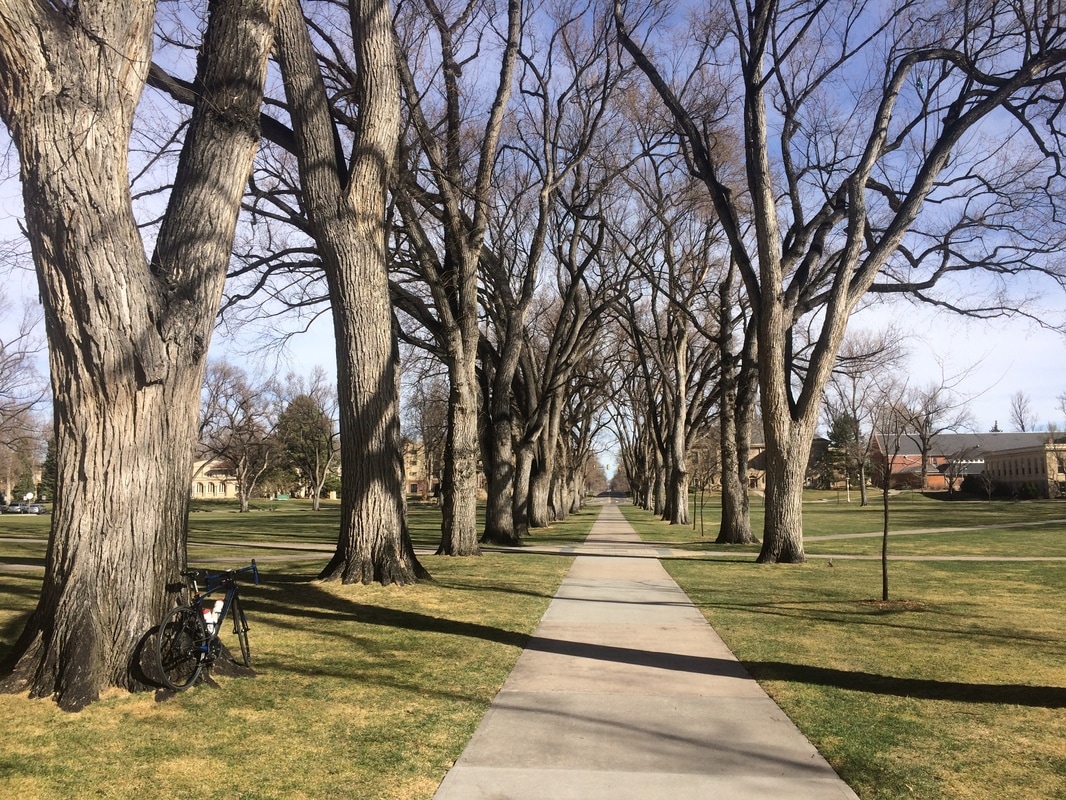
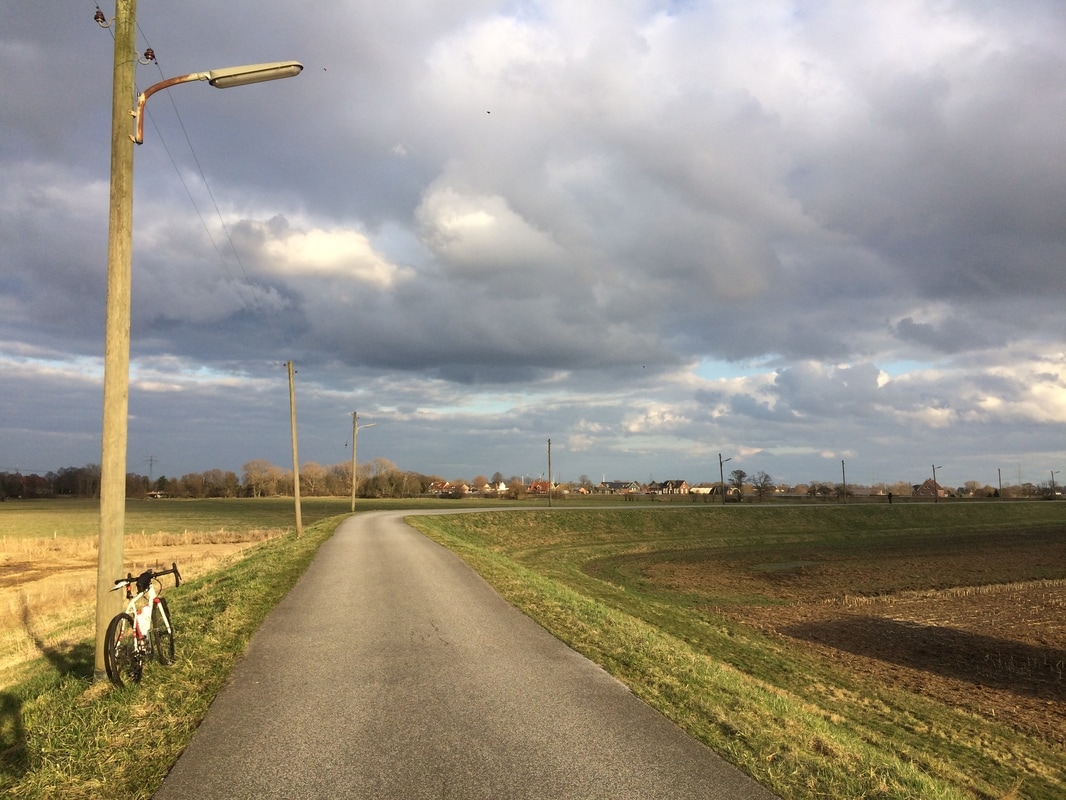
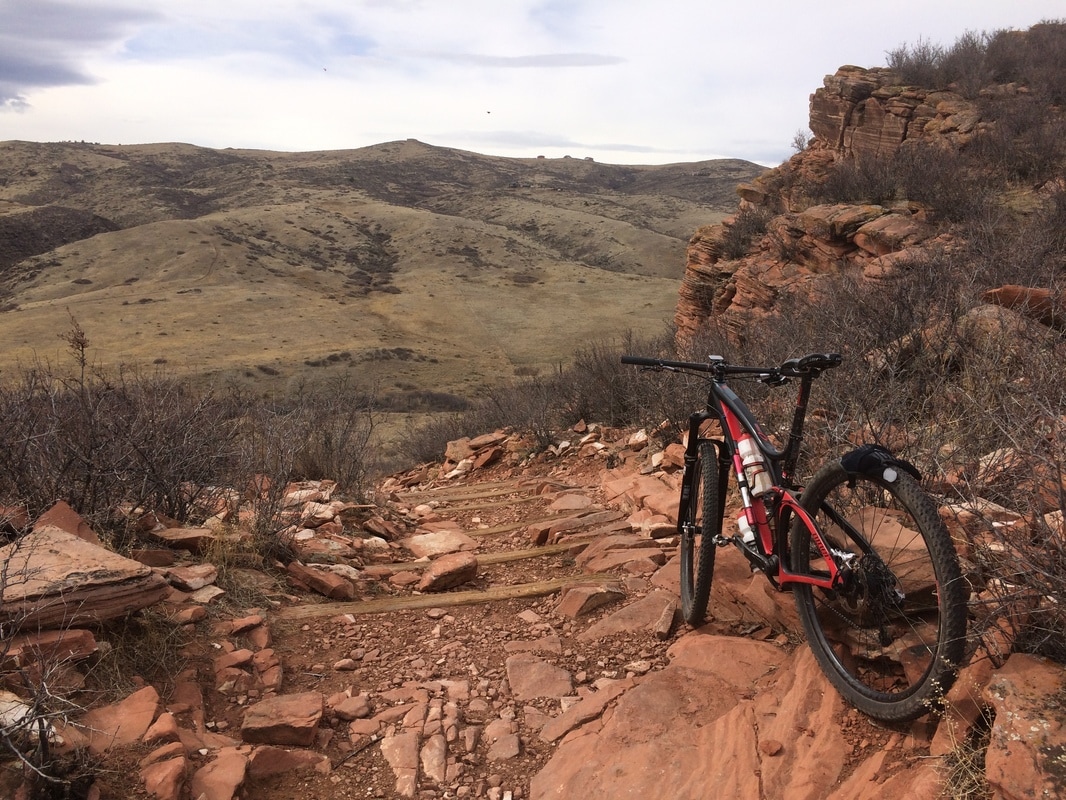
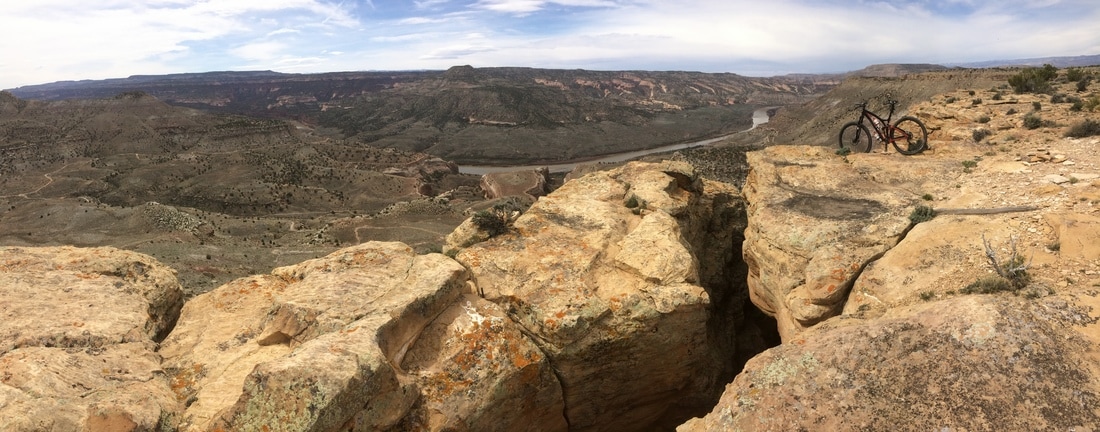













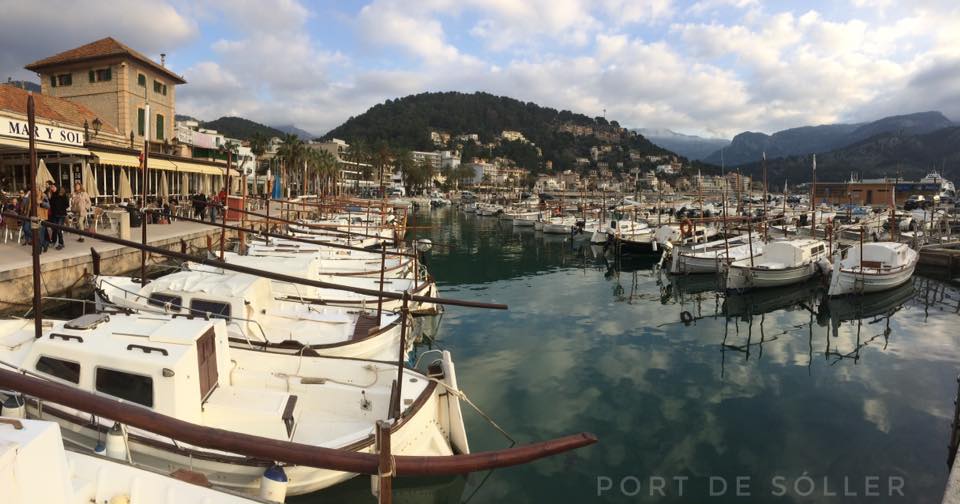


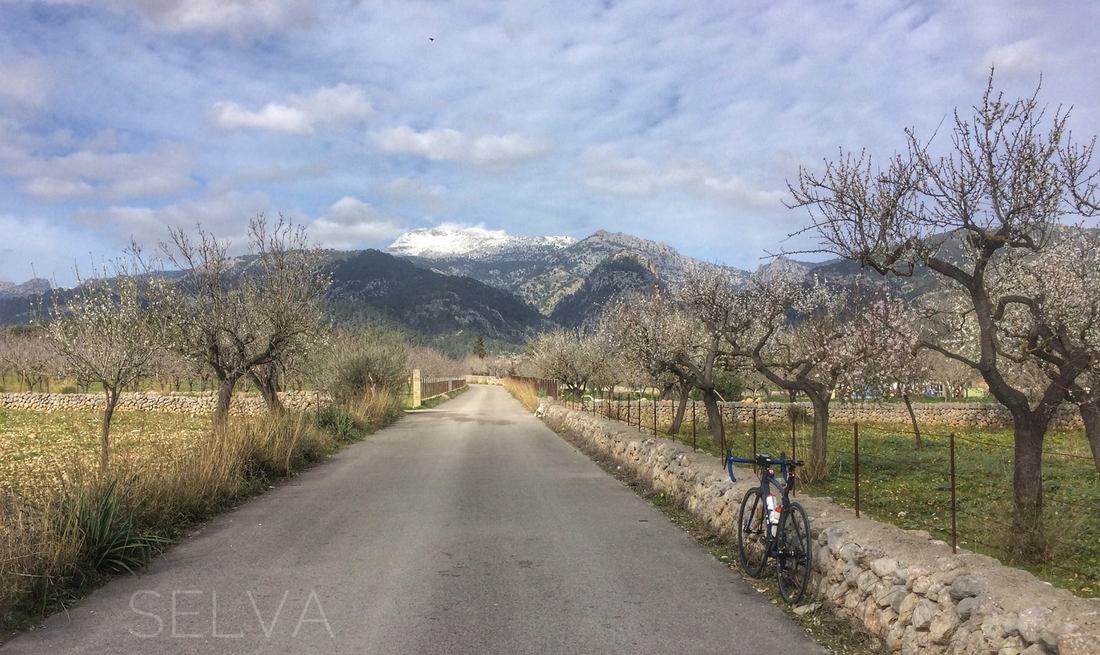






 RSS Feed
RSS Feed